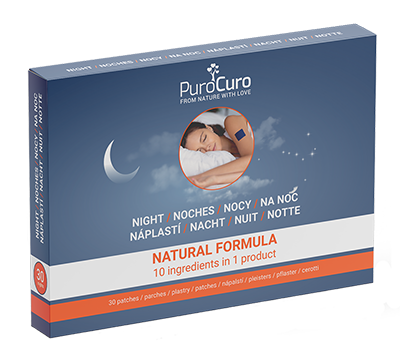The passionflower is a climbing plant native to central, southern, and northern America that produces beautiful flowers and delicious small fruits called passion fruit. In summer, these are increasingly common in stores.
Passionflower became popular in Europe as a calming tea in the 16th century after its discovery in Peru. Christian missionaries, seeing the cross-shaped stigma of the flower as the cross of Jesus Christ, gave the plant the name Passiflora, referring to the passion of Jesus and his disciples.
What does passionflower do?
Since then, the dried plant or its extracts have been used to treat stress, anxiety, and sleep problems. Although we have known about passionflower for a long time and this plant was already described in phytotherapy textbooks in the 1930s, we know that passionflower is calming and can improve sleep quality in humans.
The passionflower used as a medicinal plant contains two active ingredients: flavonoids and, in small amounts, essential oil. Additionally, the plant also contains other ingredients such as coumarin derivatives. So far, scientists have not been able to identify any of the substances as the main active ingredient. Except for the root, all parts of the plant serve as medicine.
What happens in the human body when preparations containing the active ingredients of the medicinal plant are taken?
Central nervous system neurotransmitters inhibit or enhance the response in everyday and special situations. While the neurotransmitter glutamate is considered the main pathogen, γ-aminobutyric acid (GABA), a messenger substance with a calming effect, is the main inhibitor.
When released, GABA has a relaxing effect. Therefore, too small an amount of the messenger substance causes inner confusion, anxiety, or sleep disorders. Passionflower extract can increase the concentration of GABA and thus have a calming effect. According to current knowledge, the extract from the plant's leaves is the most effective.
Passionflower became popular in Europe as a calming tea in the 16th century after its discovery in Peru. Christian missionaries, seeing the cross-shaped stigma of the flower as the cross of Jesus Christ, gave the plant the name Passiflora, referring to the passion of Jesus and his disciples.
What does passionflower do?
Since then, the dried plant or its extracts have been used to treat stress, anxiety, and sleep problems. Although we have known about passionflower for a long time and this plant was already described in phytotherapy textbooks in the 1930s, we know that passionflower is calming and can improve sleep quality in humans.
The passionflower used as a medicinal plant contains two active ingredients: flavonoids and, in small amounts, essential oil. Additionally, the plant also contains other ingredients such as coumarin derivatives. So far, scientists have not been able to identify any of the substances as the main active ingredient. Except for the root, all parts of the plant serve as medicine.
What happens in the human body when preparations containing the active ingredients of the medicinal plant are taken?
Central nervous system neurotransmitters inhibit or enhance the response in everyday and special situations. While the neurotransmitter glutamate is considered the main pathogen, γ-aminobutyric acid (GABA), a messenger substance with a calming effect, is the main inhibitor.
When released, GABA has a relaxing effect. Therefore, too small an amount of the messenger substance causes inner confusion, anxiety, or sleep disorders. Passionflower extract can increase the concentration of GABA and thus have a calming effect. According to current knowledge, the extract from the plant's leaves is the most effective.





